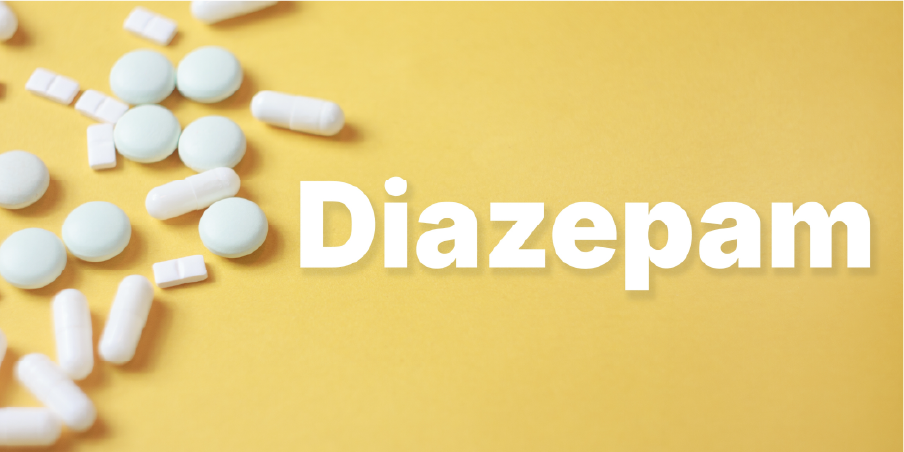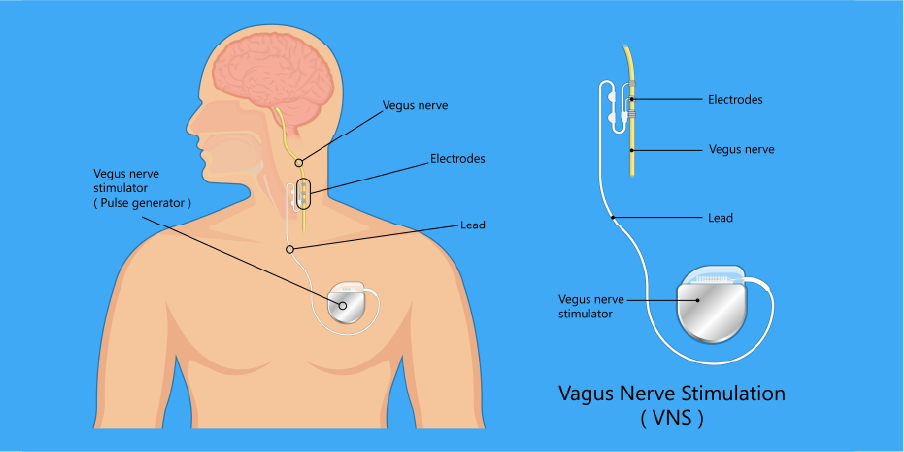Nội dung của trang này:
Nội dung của trang này:
Đánh giá
Patient Experiences a Single Seizure
A detailed history needs to be taken to rule out any previous absence, myoclonic or focal seizures because patients with undiagnosed epilepsy may present with a single generalized tonic-clonic seizure.
Decision to Treat Single Seizure
The decision to treat a single seizure is based on the estimates of risk recurrence which vary. The highest recurrence risk rates (up to 90%) are seen in patients who demonstrate epileptic discharges on electroencephalography or have congenital neurological deficits or structural brain lesion. The lowest recurrence risk rates (13-40%) are in patients who experience acute symptomatic seizures (provoked) or those with a normal electroencephalography and no identifiable cause for seizures. The overall risk is 30-40% which is greatest during the first year and decreases to <10% after 2 years. Treatment with antiepileptics/anticonvulsants can reduce the risk of recurrence by half. Early treatment has not been shown to alter the prognosis of epilepsy. A decision to start the therapy should be made by the patient and the epilepsy specialist after the discussion of the risks, benefits, preferences and prognosis. Treatment should be individualized.
Single Generalized Tonic-Clonic Seizure
The patient could be given treatment with antiepileptics/anticonvulsants if: Patient has a history of previous myoclonic, absence or focal seizures; EEG shows unequivocal epileptic discharges; patient has congenital neurological deficit; patient decides the risk of recurrence not acceptable; and a structural abnormality was demonstrated in brain imaging.
Pharmacological therapy
Antiepileptic Drugs/Anticonvulsants
The choice of antiepileptics/anticonvulsants will be based on their indications, adverse effects, interaction profiles and comorbidity.
Barbiturates
 Epilepsy_Management 1
Epilepsy_Management 1
Phenobarbital (Phenobarbitone)
Phenobarbital is a treatment option for focal onset seizures, generalized tonic-clonic, tonic and atonic seizures, myoclonic seizure, neonatal seizures and status epilepticus. This should be avoided in absence seizures, Dravet syndrome and Lennox-Gastaut syndrome. Phenobarbital is an enzyme inducer, can accelerate the metabolism of many lipid-soluble drugs and has an impact on bone health.
Primidone
Primidone is used as an add-on to treat focal seizures and generalized tonic-clonic seizures.
Carboxamides
Carbamazepine
 Epilepsy_Management 2
Epilepsy_Management 2
Carbamazepine is used to treat focal seizures with or without secondary generalized seizure. This should be avoided in absence, myoclonic, tonic, atonic seizures, Dravet syndrome and Lennox-Gastaut syndrome.
Eslicarbazepine acetate
Eslicarbazepine acetate may be effective as an adjunctive therapy or as monotherapy in reducing seizure frequency in patients with treatment-resistant adult focal epilepsy. The mechanism of action is through use-dependent blockage of voltage-sensitive sodium channels.
Oxcarbazepine
Oxcarabazepine is used as first-line monotherapy or as adjunctive treatment for focal seizures. The extended-release (2,400 mg/day) is shown to be possibly effective for treatment-resistant adult focal epilepsy. There is a similar efficacy to Carbamazepine. Additional benefits were seen when Oxcarbazepine was added to Carbamazepine therapy. This is better tolerated than Carbamazepine, fewer drug interactions and less physician monitoring is required. This should be avoided in absence, myoclonic, tonic, atonic seizures, Dravet syndrome and Lennox-Gastaut syndrome.
Rufinamide
Rufinamide is approved as adjunctive therapy for seizures associated with Lennox-Gastaut syndrome in adults and children ≥4 years old. This can be considered established as effective for decreasing seizure frequency in treatment-resistant adult focal epilepsy. The mechanism of action is through use-dependent blockage of voltage-sensitive sodium channels.
Fatty Acid Derivatives
Tiagabine
Tiagabine, a nipecotic acid derivative, is used as adjunctive treatment for treatment-resistant focal epilepsy. This should be avoided in generalized tonic-clonic, absence, myoclonic seizures, Dravet syndrome and Lennox-Gastaut syndrome.
Valproate (Divalproex, Valproic acid)
Valproate, a carboxylic acid derivative, is used to treat focal seizures and generalized seizures including absence, idiopathic, myoclonic and atonic seizures. This is considered as a first-line treatment for absence seizures at risk of or with other seizure types. This can be used for men and women who are unable to have children.
Gamma-aminobutyric acid (GABA)-Analogues
Gabapentin
Gabapentin is used as a second-line monotherapy or as adjunctive treatment for focal seizures. This may be considered in decreasing the frequency of seizures in patients ≥60 years old with new-onset focal epilepsy. This should be avoided in absence, myoclonic seizures, Dravet syndrome and Lennox-Gastaut syndrome.
Pregabalin
Pregabalin is used as adjunctive treatment for focal seizures. The immediate-release formulation is recommended as an adjunctive treatment to reduce seizure frequency in treatment-resistant adult focal epilepsy. This binds to the α2-δ protein subunit of voltage-gated calcium channels. This should be avoided in absence, myoclonic seizures, Dravet syndrome and Lennox-Gastaut syndrome.
Vigabatrin
Vigabatrin is used as an adjunctive treatment for treatment-resistant adult focal epilepsy. This should be reserved for patients not adequately controlled by other agents. This is the preferred treatment for infantile spasms and West syndrome. This should be used with caution in patients with absence, myoclonic seizures, Dravet syndrome and Lennox-Gastaut syndrome. This acts by inactivating GABA transaminase. There is limited clinical use because of irreversible concentric visual field defects.
Hydantoins
Fosphenytoin
Fosphenytoin is used to treat status epilepticus. The advantages over standard parenteral Phenytoin include easier administration (IM/IV with less tissue irritation at injection site) and better tolerability (less incidence of hypotension and cardiac arrhythmias compared to Phenytoin).
Phenytoin
 Epilepsy_Management 3
Epilepsy_Management 3
Phenytoin is used to treat focal onset seizures and status epilepticus. This should be used with caution in patients with absence and myoclonic seizures.
Other Antiepileptic Drugs/Anticonvulsants
Brivaracetam
Brivaracetam, 2-pyrrolidine derivative and Levetiracetam analog, is approved as monotherapy or adjunctive therapy for focal onset seizures in patients ≥16 years old. This may be used as monotherapy or as an add-on for myoclonic seizures. This may be used as an add-on for generalized tonic-clonic seizures.
Cenobamate
Cenobamate is approved for the treatment of focal seizures.
Ethosuximide
Ethosuximide, a succinimide compound, is used to treat absence seizures.
Felbamate
Felbamate may be used as monotherapy or as adjunctive treatment for refractory focal seizures. The last-line therapy for patients in whom epilepsy is so severe that the risk of aplastic anemia and/or liver failure is acceptable. This is a carbamate structurally related to Meprobamate with antiepileptic activity.
Fenfluramine
Fenfluramine, a serotonin 5HT-2 receptor agonist, is used as a second-line antiepileptic treatment for Dravet syndrome and Lennox-Gastaut syndrome-associated seizures in patients ≥2 years of age. This is reserved for patients who are refractory to other antiepileptic medications.
Please see Epilepsy
(Pediatric) disease management chart for further information.
Lacosamide
Lacosamine is used as monotherapy and/or an adjunctive treatment for focal onset seizures in adults. This has shown effectiveness in reducing seizure frequency in patients with treatment-resistant adult focal epilepsy. This is used as an adjunctive treatment for generalized tonic-clonic seizure. This inactivates slowly voltage-gated channels and binds to collapsin response mediator protein 2 (CRMP-2). This may exacerbate seizures in patients with Dravet syndrome and Lennox-Gastaut syndrome.
Lamotrigine
Lamotrigine, a phenyltriazine compound, is used as monotherapy or as adjunctive treatment for focal seizures, generalized tonic-clonic, absence, tonic and atonic seizures, idiopathic generalized epilepsy and Lennox-Gastaut syndrome. This may be a treatment option to reduce seizure frequency in patients ≥60 years old with new-onset focal epilepsy or unclassified generalized tonic-clonic seizures. Extended-release and immediate-release formulations may be used as an adjunctive therapy to reduce seizure frequency in treatment-resistant generalized tonic-clonic seizures. This can be used in women who are able to have children. This has a favorable behavioral and cognitive profile. This does not induce metabolism of lipid-soluble drugs and does not lead to weight gain. This can worsen myoclonus in some cases. This may exacerbate seizures in patients with Dravet syndrome and Lennox-Gastaut syndrome.
Levetiracetam
 Epilepsy_Management 4
Epilepsy_Management 4
Levetiracetam is used as an adjunctive treatment for focal onset seizures, generalized tonic-clonic, myoclonic, tonic and atonic seizures, and drug-resistant epilepsy. This can be used in women who are able to have children. This may be used as monotherapy in adults for focal onset seizures with or without secondary generalization. This is an analogue of Piracetam which is a nootropic.
Mesuximide
Mesuximide, a succinimide compound, is used to treat absence seizures.
Perampanel
Perampenel is used as an adjunctive treatment for focal onset seizures in adults, idiopathic generalized epilepsy and generalized tonic-clonic seizures. This is recommended as an adjunctive therapy to reduce seizure frequency in treatment-resistant adult focal epilepsy. This inhibits alpha-amino-3-hydroxy-5-methyl-4-isoxazolepropionic acid (AMPA)-induced increases in the intracellular Ca+2 and selectively blocks AMPA-receptor mediated synaptic transmission, thus reducing neuronal excitation.
Topiramate
Topiramate, a sulfamate-substituted monosaccharide, is used as a monotherapy in newly diagnosed epilepsy or conversion to monotherapy in patients with epilepsy. This is an adjunctive treatment for focal seizures, generalized seizures and Lennox-Gastaut syndrome. In some countries, Topiramate is only approved as adjunctive treatment. In children, this may be used as a first-line treatment for myoclonic epilepsy of infancy. An extended-release Topiramate was found to be probably effective as adjunctive therapy for treatment-resistant adult focal epilepsy.
Zonisamide
Zonisamide is recommended as initial monotherapy or add-on treatment for adults with focal onset seizures. This may be used as monotherapy to reduce seizure frequency in patients with new-onset focal epilepsy or unclassified generalized tonic-clonic seizures. This may be an option as an adjunctive therapy to reduce seizure frequency in children ages 6-17 years with treatment-resistant focal epilepsy. This may be an option for refractory myoclonic seizures and drug-resistant idiopathic generalized epilepsy. Zonisamide is a benzisoxazole derivative that appears to have a mechanism of action to stop the spread of seizures and suppresses their focus.
Benzodiazepines
The use of benzodiazepines may be limited by the development of tolerance and sedation; other antiepileptics are usually preferred.
Clobazam
Clobazam is used as an adjunctive treatment for focal onset seizures, generalized seizures, Lennox-Gastaut syndrome and may be effective for drug-resistant adult focal epilepsy, refractory myoclonic seizures and drug-resistant idiopathic generalized epilepsy. This is a long-acting benzodiazepine with similar actions to Diazepam.
Clonazepam
Clonazepam is used as monotherapy or as an adjunctive treatment for all types of seizures (except absence and myoclonic seizures) including as an alternative to other antiepileptics in status epilepticus and for refractory myoclonic seizures and for drug-resistant idiopathic generalized epilepsy. This is a long-acting benzodiazepine with similar actions to Diazepam.
Diazepam
 Epilepsy_Management 5
Epilepsy_Management 5
Diazepam is used as an adjunctive treatment for all types of seizures and may be used as a first-line agent in the treatment of status epilepticus. This is a long-acting benzodiazepine which acts by enhancing GABA activity in the brain.
Lorazepam
Lorazapam is used as a first-line agent in the treatment of status epilepticus. This is advantageous to Diazepam in status epilepticus because it has a longer duration of action. The disadvantage of Lorazepam is that the parenteral form requires refrigeration. This is a long-acting benzodiazepine with similar actions to Diazepam.
Midazolam
Midazolam is used to treat status epilepticus resistant to treatment by Diazepam, Lorazepam and Phenytoin. This is a short-acting benzodiazepine with similar actions to Diazepam.
Others
Acetazolamide
Acetazolamide is used as an adjunctive treatment for refractory focal seizures, atypical absence, tonic, atonic and myoclonic seizures resistant to conventional treatment. This inhibits carbonic anhydrase in glial cells in the central nervous system.
Propofol
Propofol, as an anesthetic, is used in conjunction with assisted ventilation to control refractory status epilepticus. This acts as an alkylphenol short-acting anesthetic and central nervous system depressant which directly activates gamma-aminobutyric acid receptor.
Combination Therapy
Consider combination therapy if the patient has substantial seizure control with the first-line agent but still experiences seizures at a maximum dose. If various combinations fail to confer seizure freedom, return to the combination with the best control of seizures and best tolerability. The drugs used in combination should be matched to the patient’s seizure type. Combined antiepileptic drugs should have different mechanisms of action. Combination therapy should be administered as such: Administer the best monotherapy option at optimal dose with no side effects; and administer the subsequent drugs after that, increasing the dose of each slowly to obtain maximum response with minimal toxicity.
Drug-Resistant Epilepsy Therapy
Drug-resistant epilepsy therapy is defined as a failure of adequate trials of two tolerated and appropriately chosen and used antiepileptic drug schedules to obtain sustained seizure freedom. Before changing therapy, diagnosis, drug dose, drug administration frequency, comorbidities and patient compliance should be reviewed. A systematic review has shown sufficient evidence that a ketogenic diet is effective in reducing seizure frequency in children with refractory epilepsy although there is a lack of controlled trials. For patients >18 years old with resistant focal epilepsy, deep brain stimulation may be done. It is the electrical stimulation of specific subcortical nuclei that have widespread neural connections.
Phẫu thuật
 Epilepsy_Management 6
Epilepsy_Management 6Surgery may be an option for epileptic patients with seizures uncontrolled by pharmacological therapy and those with surgically remediable epileptic syndrome. Assess the patient for the suitability of curative resective procedures before considering palliative procedures.
Curative Resective Procedures
Curative resective procedures aim to eliminate seizures completely which would potentially lead to permanent remission without the need for antiepileptic drugs.
Temporal Lobe Resection
The lateral temporal cortex is resected first, and then the amygdala and hippocampus are resected. Approximately 70-90% of the patients become seizure-free.
Lesionectomy/Focal Resection
Lesionectomy is the resection of epileptogenic focus based on semiology, EEG finding, neuropsychological tests, MRI and PET scan. The focus could be lesions such as cortical dysplasia, cavernoma, tumor or vascular malformation. Approximately 50% of the patients become seizure-free.
Extratemporal Resection (Frontal, Parietal and Occipital Lobectomy)
Extratemporal resection is the resection of the respective section of the brain where the epileptogenic focus was identified on electrophysiological tests or functional imaging, with no obvious lesion on MRI. Approximately 50% of the patients become seizure-free.
Palliative Procedures
Palliative procedures aim to disconnect the epileptogenic area from other parts of the brain to reduce the severity of seizures. Multiple subpial transections for epileptogenic focus at eloquent functional area. Anatomical or functional hemispherectomy and hemispherotomy are typically reserved for children with very large areas of seizure onset (eg Rasmussen’s syndrome or cerebral mega-gyrus malformation). Corpus callosotomy is for uncontrolled frequent drop attacks.
Laser Interstitial Thermal Therapy
Laser interstitial thermal therapy is a focal ablation of an epileptogenic focus using image-guided focal laser thermal energy.
Stereotactic Radiosurgery
Stereotactic radiosurgery is a focal ablation of epileptogenic focus using image-guided focal high-dose radiation.
Neurostimulation Device Implantations
Neurostimulation device implantations reduce the frequency of seizures in patients who are refractory to pharmacological therapy and who are not suitable for resection or palliative surgical procedures.
Vagus Nerve Stimulation (VNS)
 Epilepsy_Management 7
Epilepsy_Management 7Vagus nerve stimulation is a modulation of cerebral neurotransmitters via stimulation of the left vagal nerve in the neck. Around 50% of the patients got >50% reduction in seizure frequency.
Responsive Neurostimulation (RNS)
Responsive neurostimulation is a device that can record seizure activity directly from the brain and delivers stimulation to stop seizures.
Deep Brain Stimulation (DBS)
Deep brain stimulation is a surgery that involves implanting an electrode into a specific deep part of the brain and placing a stimulating device under the skin in the chest. The cyclical stimulation reduces the frequency of the seizure.
